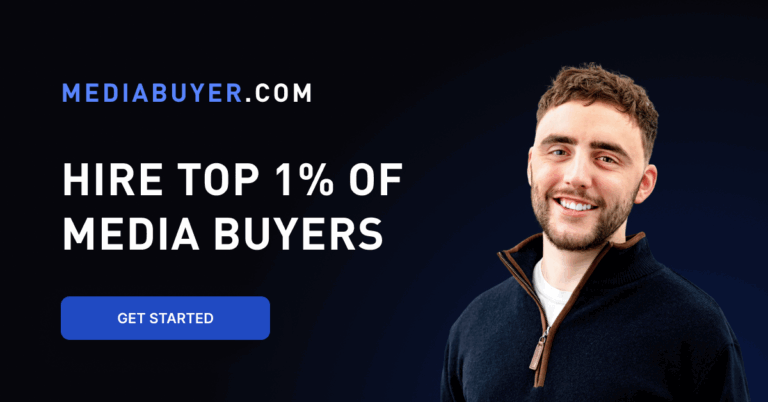Your cost per lead looks great. Your conversion rates don’t. Here’s why.
The problem isn’t who you’re targeting.
It’s WHAT you say, WHEN you’re targeting them.
Most media buyers find one angle that works and scale it. But they miss that the same person experiences different problem states that require different messaging approaches.
Antonio discovered this during a debt relief campaign where leads weren’t converting to sales calls. His cost per lead was reasonable, but lead quality was terrible.
Then Antonio realized his mistake. He was targeting the right people but speaking to them wrong. Some needed immediate crisis relief. Others were comparison shopping. Others were skeptical about scams.
His old approach:
One audience, one generic message about debt relief help.
His new approach:
Same audience, different creatives for different problem states. Crisis-state prospects got urgent “stop collection calls today” messaging with government-style official imagery. Research-state prospects got comparison information and credentials. Skeptical prospects got anti-scam messaging with legitimacy proof.
The result: Cost per qualified lead dropped by 75%
Antonio, a verified media buyer managing $350M+ in lead generation, built his entire paid ads strategy around understanding different problems his products/offers solve, and crafting different messaging for different angles to see what resonates with customers.
I interviewed Antonio to understand his framework on how to find different problem states your customer may be in, and how to craft different angles.
Antonio’s Problem State Framework
Antonio realized that successful advertising isn’t about finding better audiences.
It’s about understanding that the same people depending on the day (or time of the day) have different problem states that need different messaging approaches to get them to convert.
Antonio’s 4-step process how to craft new messaging angles:
Step 1: Map Customer Problem States Within Your Audience
“You need to understand the avatar right, because based on that you can actually craft better creative, better copy, better angles that differentiate yourself from all the other lead gen advertisers.”
What this looks like in practice: Instead of just “people with debt problems,” identify the different problem states someone may be in. Here’s 6 universal states that Antonio found:
- Crisis State: Need immediate solutions, high urgency, pain level is critical
- Research State: Actively comparing options, need information and social proof
- Skeptical State: Been burned before, need trust building and legitimacy proof
- Overwhelmed State: Know they have problems but don’t know how to solve them
- Convenience State: Want easy solutions, time-pressed, need simple processes
- Value State: Price-conscious, comparing options for best deal
Step 2: Create State-Specific Messaging Strategies
“If you think about debt relief, these people are behind on credit card payments, they live paycheck to paycheck, they think everything is a scam because there are a lot of scams in the space.”
What this looks like in practice: Antonio’s old approach was generic – “we can help with your debt!” messaging.
His new approach – Crisis state gets “Stop collection calls today,” Research state gets “Compare your debt relief options,” Skeptical state gets “Unlike other debt companies, we’re fully licensed and regulated.”
Step 3: Build Problem State-Specific Creatives
“One of the angles that works a lot is government-style imagery. Images that mimic a government feel build trust because the avatar has trust issues. You can do it based on professions, genders, age – so many different demographics, and then craft creatives and copy based on these core avatars.”
What this looks like in practice: Antonio also matches the creatives to problem state. Skeptical prospects see official, government-style visuals that build immediate trust. Crisis prospects see urgent, solution-focused imagery. Research prospects see comparison charts and credentials.
Universal Applications
These problem states work across any market/industry:.
B2B Software Example:
- Crisis State: “Fix your system downtime today”
- Research State: “Compare top project management tools”
- Skeptical State: “Why 10,000+ companies trust our security”
- Overwhelmed State: “Project management made simple”
- Convenience State: “Set up in 5 minutes”
- Value State: “Save $10K compared to competitors”
E-commerce Brand That Sells Apparel:
- Crisis State: “Need outfit for tomorrow’s interview”
- Research State: “Top-rated shirts for professionals”
- Skeptical State: “30-day money-back guarantee”
- Overwhelmed State: “Complete style guide included”
- Convenience State: “Free next-day delivery”
- Value State: “Designer quality, half the price”
Try This
This week, test different messages with your top-performing audience:
- Find your customers’ problem states – What different states could your prospects be in when they see your ad? Review the universal states and determine which 3-4 apply to your customers.
- Create state-specific messaging – How would you talk differently to someone in crisis vs. research mode?
- Design matching creatives – What visuals work best for each problem state?
- Test state-based approaches – Same audience, different problem state messaging
Bottom line:
It’s not about who you’re targeting, it’s what you say when you’re targeting them.
The media buyers who understand this will generate qualified leads while competitors use generic messaging that misses where prospects actually are.
You can get Antonio’s Problem-State cheat sheet here (your complete guide to messaging different customer states).
For more, watch the full Q&A interview with Antonio here.








